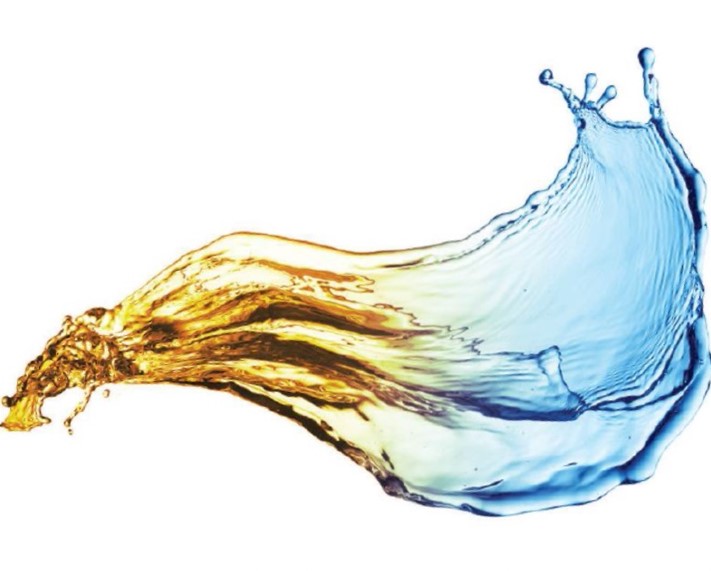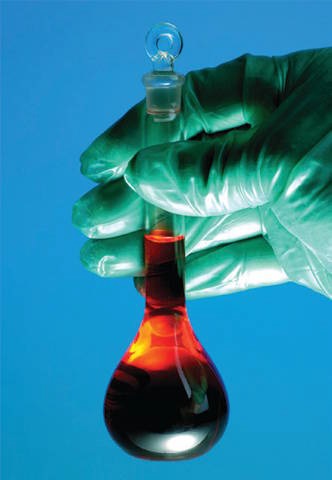What is a ‘green’ lubricant?
TLT Sounding Board December 2010

www.canstockphoto.com
The question sounds simple enough, but as TLT contributing editor Dr. Neil Canter explains in his in-depth treatment, there is no universally accepted definition for the term. “While the question raised is a simple one,” Dr. Canter notes, “the answer is much more complex and, indeed, has not even been clearly articulated.” Asked to select from a list, the largest group of survey respondents (45%) said the best way to define a green lubricant is by its life cycle, particularly final disposition. Some readers reject the green lubricant notion altogether. “It’s a politically correct term that really has no significant meaning,” said one respondent. Asked to offer their own definitions of a green lubricant, TLT readers submitted the following. For another perspective, check out Dr. Bob Gresham’s “The Global Case for Green” article.
Green means the lubricant will not spoil the environment if it is spilled.
Something that has significantly less impact on the environment because it is less toxic, offers energy savings, lasts longer, is made from recycled material, can be recycled easier and is more biodegradable.
There is no such thing.
A green lubricant provides environmental benefits over a traditional lubricant. The environmental benefits include biodegradability, use of renewable raw materials or decreased energy consumption when produced or used.
Green lubricants are biodegradable or non-toxic to the environment. Both bio-based and certain synthetic fluids fit this description. A lubricant need not be bio-based to be considered green.
Our company categorizes based on the application—is it on or near a waterway or water table? If the application is on land, we suggest a lubricant that is readily biodegradable by OECD 301 standards. If we are lubricating a steering system in a ferry boat (where a leak gets immediately into water) a lubricant considered for use must pass the EPA’s 40CFR435 Static Sheen test and be aquatically friendly.
One that contains no carcinogens, can be recycled, decomposed to basic ingredients or has after-life use.
A green lubricant would be any product that maximizes the use of renewable resources while maintaining proper operational life of the equipment.
Products derived from a renewable carbon source or a product that reduces greenhouse gas emissions.
Degrades to somewhat harmless compound within a short period of time (a few months).
It’s a bio-based lubricant that has fast decomposition (biodegradability) with minimal environmental damage.
Any lubricant that is coming from vegetable sources and is disposed of easily.
Product is greater than 50% bio-derived. Green should indicate that the majority of the product is derived from renewable resources. A product can be bio-derived and synthetic.
No seriously acute or chronically hazardous components.
Made from renewable resources and when disposed of in nature, whether buried or dumped in the ocean, it will not harm any micro- or macro-organisms.
A lubricant that is friendly to the environment. Meaning it is readily biodegradable and possesses good aquatic toxicity.
Sustainable with zero carbon footprint.
Green is a marketing term with no definition other than what the user intended it to be.
Substantially reduces or does no harm to the environment through renewable content or extreme longevity.
A lubricant that is biodegradable, non-hazardous and manufactured from materials that can be easily replaced through minimally invasive farming or harvesting.

A green lubricant Has significant amount (>50%) of renewable plant and/or animal content.
A green lubricant should mean not only being classed as readily biodegradable but also should not have any breakdown components that would be considered harmful to the environment.
Home grown.
A green lubricant should be one that does not derive from nonrenewable resources and/or has no environmental issue with use or disposal.
A green lubricant demonstrates long operational life through proper maintenance and can be safely waste treated.
A green lubricant is any lubricant that conserves natural resources compared to non-green equivalent products.
Any lubricant that reduces the consumption of petroleum products, either by using a bio-based basestock, recycling or prolonging drain intervals.
A green lubricant is non-toxic to the environment, degrades over time under certain conditions leaving nontoxic residues and takes less resources than non-green lubricants to manufacture. The first two conditions follow the “leave no trace” philosophy, while the last tries to ensure that the manufacturing process does not pollute more in making a green product than making a non-green product.
A green lubricant is one that either biodegrades to harmless products, is made from reclaimed oils or is manufactured from renewable resources.
A green lubricant needs to meet two specs. (1.) It reduces/eliminates frictional losses, thus minimizing energy consumed by the system. (2.) It is biodegradable within five years with no harmful effects to nature.
Over priced and less effective. ’Nuff said.
A lubricant manufactured from or containing a high percentage of raw materials that are derived from a renewable resource.
A lubricant that consists of organic materials and that can be absorbed by the Earth.
Green should include any lubricant that is made from recycled materials and/or from natural resources.
There are no green lubricants—all products spilled or contacted will have some impact on the environment. The closet to green lubricants is the inert solid lubricants category. Environmental law suggests using products having less impact to the environment where spills or incidental contacts and potential for toxicity exist.
A green lubricant has the smallest environmental impact. A green product does not necessarily need to be bio-based; it could be a full synthetic that provides an increased service interval, lessening the amount of waste oil generated over the life of a piece of equipment.
A lube that has longevity, because once you put any lube in a machine it becomes a hazardous waste contaminated with heavy metal.
A lubricant that does not injure the human being and its environment and fully adheres to the three main concepts of durable development.
Which do you think is the single most important factor in designating a lubricant as green?
The degree to which the basestock is bio-based vs. petroleum-based
24%
The process and amount of energy used to create the lubricant
8%
The lubricant’s carbon footprint
13%
The life cycle of the lubricant, particularly its disposition
45%
Other
10%
Based on responses from 175 TLT readers.

Biodegradable so that natural bacteria can break it down.
Any energy-conserving or readily biodegradable lubricant could be considered green. Also, lubricants that extend drain intervals and/or reduce lubricant consumption.
The substance is categorized as “readably biodegradable” as defined by OECD standard method 301. Yes, this means that it needs to be tested! (Can’t just make a guess!)
Green is a marketing term that is virtually meaningless. It appears to be anything that is even marginally easier on the environment than petroleum.
That which when used properly lines the financial pockets of those promoting the concept, product or philosophy.
The basestock used to make the lubricant and the additives used to make a green lubricant should be based on renewable plant or algae resources.
A lubricant that conserves natural resources, either in its manufacture or use.
Green is a process rather than an object. It is reducing waste, toxicity and usage.
Green? Acceptable answer: Environmentally safe. Real answer: Very expensive or as you would say in the South, “Too much sugar for a dime.”
A green lubricant is one that has been produced using naturally occurring materials while consuming as little energy for production. The materials used must be environmentally friendly.
A green lubricant can be defined as one whereby a certain portion of the lubricant after use is biodegradable. Some people tend to use the definition ‘green’ based on carbon footprint used in the manufacturing process of the lubricant.
Lubricant that is not petroleum-based.
A green lubricant is derived from either reprocessing spent lubricants or from organics that can be readily disposed of without significant impact to the environment.
A green lubricant is a lubricant with a carbon footprint below a fixed level.
Green lubricants are natural extracts that perform equally or even better than any conventional oil. The performance depends on its hydrocarbon chain. Green lubricants prevent contamination generated from car combustion.
Something that breaks down completely in the environment without initiating or contributing to destructive conditions in the atmosphere, soil or water.
Lubricants manufactured through processes requiring limited energy input and minimal carbon footprint, as well as primarily incorporating renewable raw materials considered to be biodegradable, non-toxic to plants/animals and cause little to no harm to the environment.
A lubricant that works efficiently for a long time and can be readily reused or biodegraded.
A green lubricant is any lubricant that is made with less energy or one that helps reduce energy consumption.
A lubricant that minimizes waste.
One OK for casual contact with food products.
Use of natural materials such as animal fat or recycled basestock.
A lubricant that is readily biodegradable and contains no heavy metal additives such as ZDDP.
I prefer “greener”—that which is more sustainable in its production and less environmentally destructive in its use than another comparable product or practice.
If the end-user doesn’t believe it is green, then it isn’t!
Green implies having a relatively positive impact to the environment. However, it is rather “relatively less damaging to the environment” instead. Today, most green solutions marketed are indirect and not new.
The whole green movement is an attempt by the far left to demonize the petroleum industry.
Vegetable oil.
Green = long life (disposal costs are less and need for new fluid is reduced).
I think green means no pollution.
There could be several definitions. It could be a lubricant that is from recycled or re-refined basestocks, it could be lubricants that are environmentally friendly and are readily biodegradable. Or you could make an argument for products that help lower emissions, decrease fuel consumption, increased lubricant life cycle or decrease energy consumption.
Biodegradable lubricants made of natural or synthetic esters.

Green lubricants should be defined in terms of biodegradability. Mineral oils, as well as popular synthetic basestocks, biodegrade slowly. Oils based on naturally occurring fatty acids and their derivatives are usually much more readily biodegradable. These would then harm the environment less than the more common mineral and synthetic oils. I think using the term ‘green’ to describe lubes that lower friction and/or emissions is very misleading. These environmental benefits are secondary and even tertiary; their benefits are only achieved upon application and are usually influenced by the mechanical integrity of the equipment. These products themselves are not necessarily environmentally friendly; rather their application provides environmental benefits.
A real green lubricant is more than just biodegradable. It should have minimum environmental impact over the complete product cycle.
Totally hydrocarbon-free.
A lubricant that meets the definition of biodegradable and uses a base oil from a renewable resource.
A green lubricant would have to show a significant improvement on state-of-the-art with respect to either reduction of harmful wastes or emissions or reduced energy consumption of equipment, engines, etc.
A green lubricant does not contribute to pollution of our natural environment and is not detrimental to the sustainability of human, plant and animal life. If the ideal case is unattainable, it should be the least harmful in the event that it comes into direct contact with the environment and has the highest lubricating effect in energy-saving efforts. For example, take an ester oil instead of a mineral oil with aromatic content.
A lubricant that limits effect on the environment. It might be a bio-based product or a product that last much longer than its mineral counterpart and then avoids more frequent change-overs (less lubricant used over time).
Green lubes are motor oil for DPF usage as well as a row of greases that are ester-based formulations. It depends on the additives.
Green to me means (1.) The lubricant will not leave a sheen, (2.) The USCG does not consider the lubricant to be hazardous to marine life or humans, (3.) A green lubricant is not toxic to marine life, be it a plant, mammal or a human.
A lubricant essentially from a biomass source that does not contribute toward greenhouse effect.
A green lubricant would be representative of a recycled engine oil.
Our company considers green lubricants to be at least 60% biodegradable in 28 days.
For our market a green lubricant would have a non-corrosive DOT rating, be sourced from renewable materials, is readily biodegradable and would be composed of GRAS (generally recognized as safe by the FDA) materials.
Complete degradation is more important than the degradation speed. No toxic influence is important. Green lubricants have to be more than biodegradable. They have to be good for the environment but also for the machines. At the moment this is only bio-oils based on polyalphaolefins.
Green products have a positive life cycle assessment. This means the net effect (production, use and waste disposal) on the environment is not negative. Furthermore, green products should be sustainable. This means the net effect on the environment, economy and social structure and people should be positive, not only in the present but also in the future.
Will technology evolve bio-based lubricants to the point where they offer equal performance to their mineral-based counterparts?
Yes
65%
No
35%
Based on responses from 175 TLT readers.
Editor’s Note: Sounding Board is based on an e-mail survey of 7,200 TLT readers. Views expressed are those of the respondents and do not reflect the opinions of the Society of Tribologists and Lubrication Engineers. STLE does not vouch for the technical accuracy of opinions expressed in Sounding Board, nor does inclusion of a comment represent an endorsement of the technology by STLE.